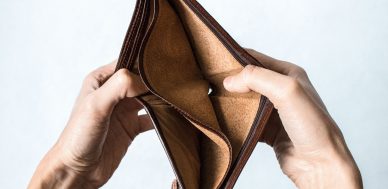A Recession Could Be Just Around the Corner
Here is a bold claim, but one worth making: 2020 could be a dismal year for the U.S. economy. Investors beware: a recession could be ahead.
While the mainstream media is busy talking about how well the stock market has been performing, know that the U.S. economy isn’t in great shape. In fact, it wouldn’t be wrong to say that the economy is on the edge of a cliff.
In 2020, things could fall apart further.
Here’s some perspective.
Look at the Federal Reserve. It’s not as upbeat as it used to be. For 2020, the Fed expects the U.S. economy to grow just two percent. (Source: “Table 1. Economic projections of Federal Reserve Board members and Federal Reserve Bank presidents, under their individual assumptions of projected appropriate monetary policy, December 2019,” Board of Governors of the Federal Reserve System, December 11, 2019.)
Keep in mind, the Federal Reserve’s estimates tend to be very optimistic. You really have to wonder what will happen in 2020 if those who are generally more optimistic about the future aren’t excited.
Watch the American Consumer
But look beyond the Fed and pay close attention to the economic data. It continues turn dire.
You see, American consumers are leveraged.
As of the third quarter of 2019, aggregate household debt in the U.S. has grown to almost $14.0 trillion. That’s $1.3 trillion higher than the previous peak of $12.7 trillion. (Source: “Household Debt And Credit Report 2019: Q3,” Federal Reserve Bank of New York, last accessed December 13, 2019.)
Here’s the kicker: consumer debt in the U.S. has been increasing for 21 consecutive quarters.
Don’t forget, debt increasing in the short term is fine, but if it continues to grow, it’s troublesome. If consumers take on more debt, they have to pay more money in order to service that debt. What happens when someone has higher debt payments? They spend less on things they want and need.
Pay attention to the chart below. It plots the debt service payments as a percentage of disposable income for consumers in the United States.
Debt service payments are already moving higher.
(Source: “Consumer Debt Service Payments as a Percent of Disposable Personal Income,” Federal Reserve Bank of St. Louis, last accessed December 13, 2019.)
Broadening the horizon a little bit more, the U.S. economy is heavily reliant on consumers. If consumer spending increases, the U.S. economy improves. If consumers pull back on spending, a recession follows.
How big of a force is the American consumer?
One measure of American consumers’ strength is personal consumption expenditures. On an annual basis, personal consumption expenditures in the U.S. amount to close to $15.0 trillion. (Source: “Personal Consumption Expenditures,” Federal Reserve Bank of St. Louis, last accessed December 13, 2019.)
The entire U.S. gross domestic product (GDP) is roughly $21.0 trillion, so that means spending by American consumers accounts for about 70% of U.S. GDP.
U.S. Economic Outlook for 2020
Dear reader, I am skeptical going into 2020.
Consumers in the U.S. have taken on a lot of debt. This may not end well for the U.S. economy.
I am keeping a close watch on indicators like consumer sentiment, job numbers, consumer debt, and several others to see the health of the U.S. consumer. If Americans stop spending, a recession will follow very quickly.
